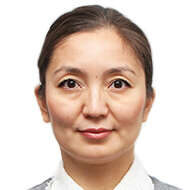Bayarsaikhan Dorjsuren (BD), Senior Health Systems Adviser, P4H Coordination Desk, World Health Organization, was interviewed by Ainur Aiypkhanova (AA), P4H community facilitator for Eastern Europe and Central Asia. Bayar has been an active advocate and has contributed to the P4H Network’s expansion.
AA: The P4H Network is growing and has been expanding fast in recent years. In your opinion, what was the main factor for this growth and success?
BD: For partnerships, it is critically important to have clarity of goals and objectives that are easy to explain, understand and demonstrate for dialogues and collaborative actions. In this respect, the P4H Network has clearly defined its mission and related vision, role and goals. Partners and members also understand the benefits and value of partnerships connecting across health, financing, social and other sectors. P4H supports and facilitates collaborations aligned with national priorities and that are evidenced based. These are very unique features of P4H.
BD: There are many unique and specific features that enabled the growth of the P4H Network since 2007. First, I would say, continued commitment and support of founding and funding members like the World Health Organization, the International Labour Organization, the World Bank Group and government partners such as Germany, France and Switzerland. They see the value of P4H as a space for cross-sectoral and cross-disciplinary collaboration that social health protection (SHP) and health financing (HF) needs. They also understand and support the rapidly changing environment and shift from vertical to horizontal collaboration. On the other hand, there is a growing need for knowledge exchange among countries and regions, which can be used to share their unique perspectives and help educate on best practices through experiences in other countries and regions. International knowledge exchange was one of the reasons for the expansion of P4H in South and Central Asia. Lastly, I would point out that the working format of P4H is very flexible and responsive to countries’ needs, and the diverse knowledge of its staff creates blended expertise across the teams working at global, regional and country levels.


